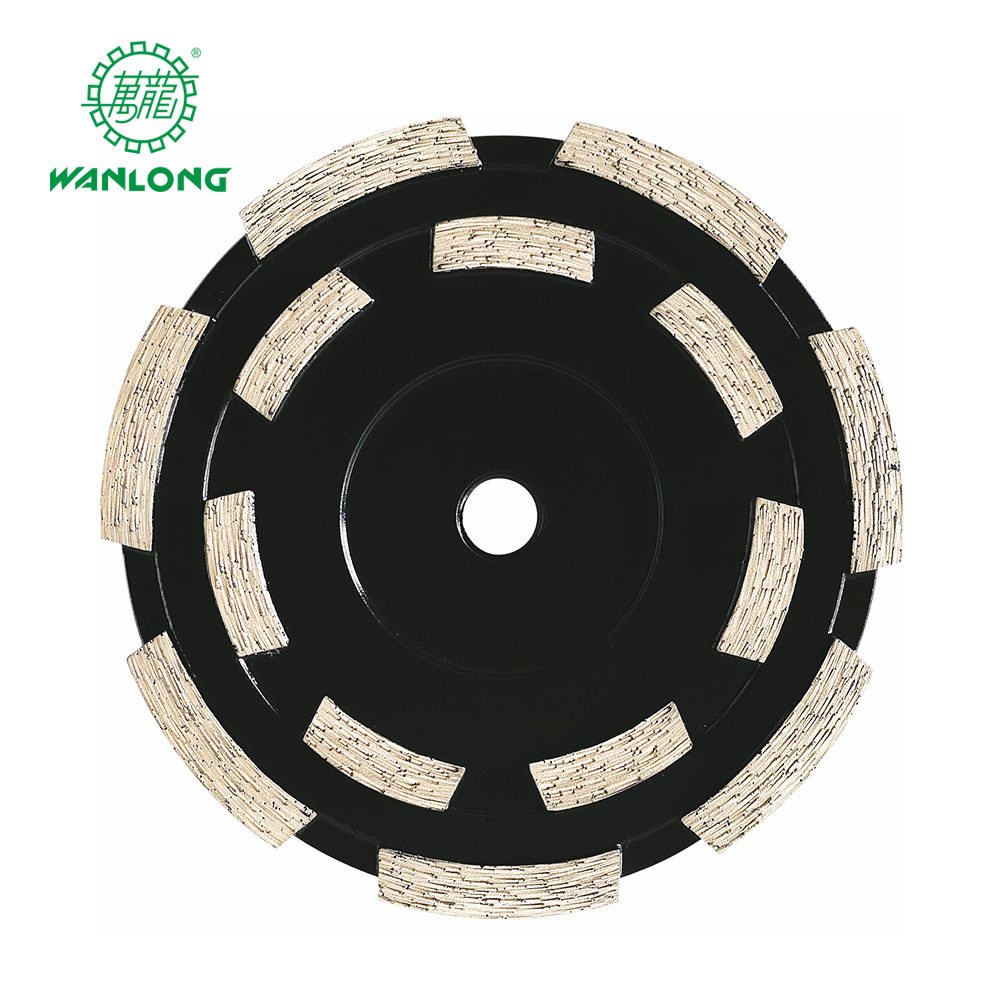How to Distinguish Diamond Cup Grinding Wheels
According to the abrasive used, it can be divided into ordinary abrasive (corundum and silicon carbide, etc.) grinding wheel and natural abrasive superhard abrasive and (diamond and cubic boron nitride, etc.) grinding wheel;


According to the shape, it can be divided into flat grinding wheel, bevel grinding wheel, cylindrical grinding wheel, cup grinding wheel, dish grinding wheel, etc.;
According to the binder, it can be divided into ceramic grinding wheel, resin grinding wheel, rubber grinding wheel, metal grinding wheel, etc.
The characteristic parameters of the grinding wheel are mainly abrasive, viscosity, hardness, binder, shape, size, etc.
How to use a diamond cup grinding wheel?
Since the diamond cup-shaped grinding wheel usually works at high speed, the rotation test (to ensure that the grinding wheel will not break at the working speed) and static balance test (to prevent the machine tool from vibrating during operation) should be carried out before use. After the grinding wheel has been working for a period of time, Dressing should be done to restore grinding performance and correct geometry.
The characteristics of grinding wheels for grinding machines are:
Due to severe friction, the temperature of the grinding zone is very high. This will cause stress and deformation of the workpiece, and even cause burns on the surface of the workpiece. Therefore, a large amount of coolant must be injected during grinding to reduce the grinding temperature. The coolant can also be discharged Chips and lubrication.
The radial force during grinding is very large. This will cause the elastic concession of the machine tool-grinding wheel-workpiece system, so that the actual depth of cut is less than the nominal depth of cut. Therefore, when the grinding is about to be completed, it should be polished without feeding to eliminate errors. .After the abrasive grains are blunt, the grinding force also increases, causing the abrasive grains to break or fall off, and the sharp edge is re-exposed. This feature is called self-sharpening. Self-sharpening enables grinding to proceed normally within a certain period of time. , But after a certain working time, manual dressing should be carried out to avoid vibration, noise and damage to the surface quality of the workpiece caused by the increase in grinding force.
Since the abrasive grains of the grinding wheel have high hardness and heat resistance, the grinding can process materials with high hardness, such as hardened steel, cemented carbide, etc. The characteristics of the grinding machine determine that the grinding process system can perform uniform micro-cutting. , generally ap=0.001~0.005mm; grinding speed is very high, generally up to v=30~50m/s; grinder has good rigidity; hydraulic transmission is adopted, so grinding can economically obtain machining accuracy (IT6~IT5) and small The surface roughness (Ra=0.8~0.2m). Grinding is one of the main methods of finishing parts.






